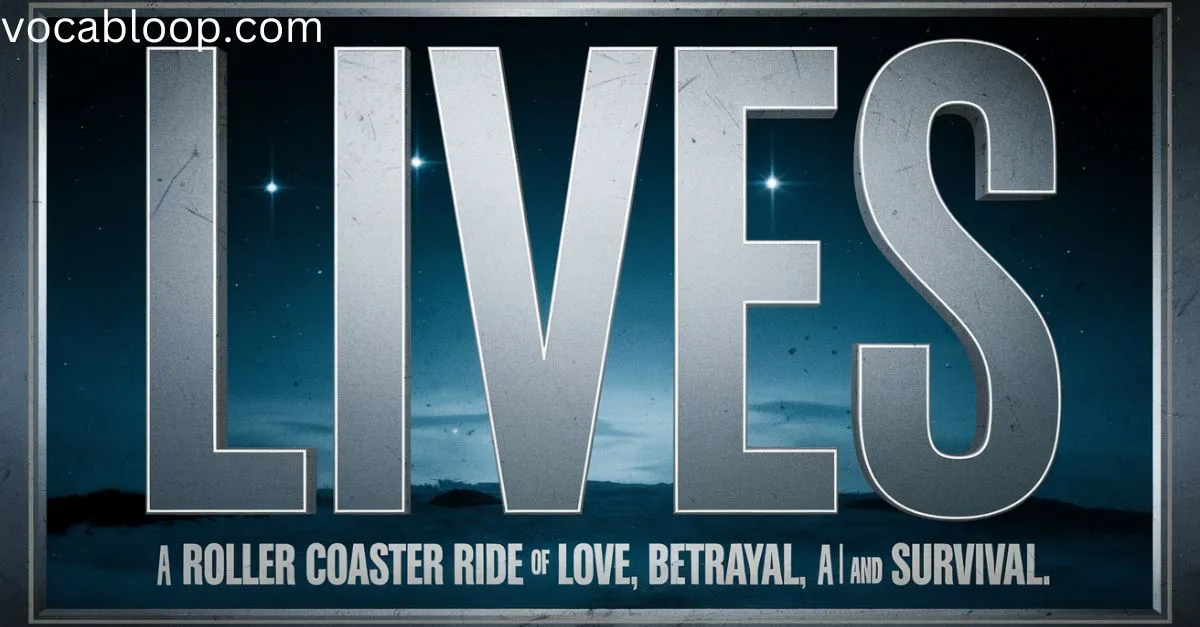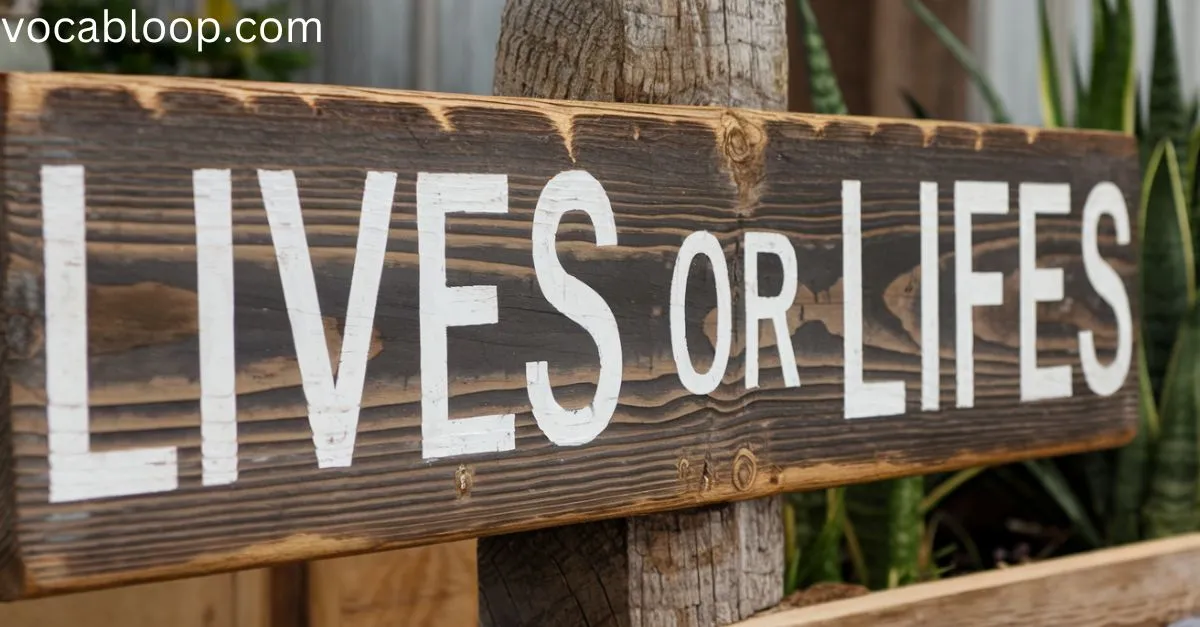The English language is full of twists and turns, often leaving learners and even native speakers puzzled. A common grammar discussion revolves around the words lives or lifes. The difference between these two terms may seem small, but it has a significant impact on clarity and correctness. To help you navigate this life and lives confusion, we’ll break it down step by step, using real-world examples, rules, and practical tips.
Understanding when to use plural lives or whether life’s is correct isn’t just a matter of sounding right. It also ensures your writing aligns with proper English grammar. Whether you’re writing about your personal life, relationship life, or a game life, getting this right matters. Let’s dive in to explore the nuances of lives vs life!
What Is There Confusion: Lives or Lifes?
Many people get tripped up when deciding between life plural forms. The confusion often stems from how we form plurals in English. Typically, adding “s” or “es” turns a singular noun into its plural form, like “dog” becomes “dogs” or “class” becomes “classes.” However, life’s plural form is irregular and follows different language rules.
Adding to the confusion, some think lifes is valid. However, the word “lifes” is not correct in standard English. People may see it in informal contexts, such as song lyrics or creative writing, but it doesn’t align with proper grammar rules. For clarity, we use lives as the plural form of life.
What Is Lives?

Definition
The word lives has two distinct grammatical roles in English. It can function as a plural noun, referring to multiple existences, or as a verb, indicating an ongoing action performed by a third person.
Meaning
As a plural noun, “lives” signifies separate existences or experiences of living beings. For example, “The firefighters saved many lives during the blaze.” As a verb, “lives” is the third-person singular form of “live,” used to describe the action of residing, existing, or continuing life. For instance, “He lives in California and loves the coast.”
| Word | Type | Example |
| Lives | Plural noun | “Many lives were saved by the doctors.” |
| Lives | Verb | “He lives a peaceful personal life.” |
Usage
The word lives is correct in specific contexts, depending on its grammatical role:
As a Plural Noun:
Use lives to describe multiple existences, beings, or individual life experiences. For example:
“The doctors saved countless lives during the emergency.”
“Their exciting lives were full of adventure and exploration.”
As a Verb:
When functioning as the third-person singular form of the verb “live,” lives refers to ongoing actions or states of being:
“She lives in a small town by the sea.”
“He lives a calm and happy life.”
What Is Life?
Definition
The word life refers to the state of being alive or the essence of existence. It encompasses the activities, experiences, and processes that define living organisms.
Meaning
Life is used to describe the singular existence of a person, animal, or organism. For example, “The beauty of life lies in its unpredictability.” When discussing multiple entities, the plural form lives. The term life’s is also valid and serves two purposes: to indicate possession, such as “Life’s challenges can teach us resilience,” or to act as a contraction, like in “Maybe life’s a journey we navigate together.”
| Word | Purpose | Example |
| Life | Singular noun | “She embraced life with open arms.” |
| Life’s | Possessive noun | “Life’s twists and turns are unexpected.” |
| Life’s | Contraction (“is”) | “Life’s too short to hold grudges.” |
Usage
The word life is always singular and describes the existence of an individual or the abstract concept of living:
“Her life changed forever after the accident.”
“The essence of life is growth and learning.”
Additionally, life’s serves as a possessive noun or contraction:
Possessive: “This is one of life’s greatest mysteries.”
Contraction: “Maybe life’s not as complicated as it seems.”
Quick Summary
When writing about life and its variations, keep the following rules in mind:
- The plural form of “life” is always “lives,” not “lifes.”
- Use “life’s” when you need to indicate possession or create a contraction.
Example to Remember:
- Singular: “Life is beautiful.”
- Plural: “The lives of many were impacted.”
- Possession: “Life’s challenges teach us resilience.”
Lives or Lifes as Parts of Speech
Lives functions as both a plural noun and a verb, while life remains a singular noun. Incorrect usage of these forms often occurs in casual settings or due to uncertain phrasing. Remember, the plural of life is irregular and doesn’t follow the standard “add ‘s'” rule, which prevents grammatical confusion.
Pronunciation of Lives or Lifes
Proper pronunciation adds fluency to your speech. The noun lives is pronounced /līvz/, rhyming with “hives,” while the singular life is pronounced /līf/, rhyming with “wife.” There is no valid pronunciation for “lifes” in standard English, making it easier to identify as an error.
| Word | Pronunciation |
| Life | /līf/ |
| Lives | /līvz/ |
Side-by-Side Comparison: Lives or Lifes
| Aspect | Lives | Lifes |
| Plural of “life”? | Yes | No |
| Grammatical use? | Correct | Incorrect |
| Pronunciation | /līvz/ | Nonexistent |
| Example | “She saved many lives.” | “N/A” |
Which One Is More Acceptable: Lives or Lifes?
In the realm of formal writing and standard English, lives is universally recognized as the correct form. The word lifes is considered a grammatical error and holds no legitimacy in proper usage. Whether you are writing an essay, a professional document, or a formal email, lives is the only acceptable plural form of “life.”
While some creative contexts, such as experimental song lyrics, music videos, or casual slang, might toy with “lifes” for stylistic reasons, this usage does not conform to the rules of English grammar. Therefore, in professional, academic, or standard writing, lifes should always be avoided.
Lives in British English and American English
Both British English and American English agree on the use of lives as the plural of “life.” Despite minor cultural or regional differences in idiomatic phrases, the grammatical rules remain the same.For instance, consider the phrase “Our lives are intertwined.” Both dialects interpret this as referencing multiple existences or shared experiences.
In British English, poetic expressions like “life’s tapestry” might evoke slightly different cultural nuances than they would in American English, where phrases such as “life’s game” often symbolize unpredictability or challenge.The consistency in grammatical rules between these two dialects ensures that learners and writers can confidently use lives in either variant of English without fear of ambiguity.
Common Mistakes and How to Avoid Them
Confusion often arises when people mix singular and plural forms or misuse “life’s.” Common errors include:
- Using “lifes” instead of “lives”:
Incorrect: “Many lifes were changed by the event.”
Correct: “Many lives were changed by the event.” - Misplacing apostrophes in “life’s”:
Incorrect: “The lifes challenges are many.”
Correct: “The life’s challenges are many.” - Confusing possession with contraction:
Incorrect: “Lifes too short to worry.”
Correct: “Life’s too short to worry.”
To avoid these errors, always double-check your usage. If in doubt, consult grammar resources, practice writing sentences, or seek feedback from a trusted source.
Trick to Remember the Difference: Lives or Lifes
A simple trick to distinguish lives from “lifes” is to think about the following example:
- “Our lives are meaningful.”
The plural context makes it clear that multiple existences or experiences are being referred to, necessitating the use of lives. Whenever you think of more than one life concept, always default to lives as the plural form.
Additionally, remember that lifes is not a recognized word in English, so it should never appear in formal writing.
Origins of the Lives or Lifes
“Lifes”
The term “lifes” is often the result of overgeneralization. English learners sometimes mistakenly apply regular pluralization rules (adding an “s”) to irregular nouns like “life.” While this error may seem intuitive, it is not valid in standard English.
“Lives”
The word lives has a rich etymology rooted in Old English. It originates from the word “lif,” which referred to existence or the state of living. Over time, the plural form evolved into “lives,” following the irregular pattern seen in other English nouns like “wolf” (wolves) and “knife” (knives).
This linguistic adaptation reflects the complexity of the English language and its blend of Germanic and Latin influences.By understanding the etymological background, you can appreciate why lives remains the correct form and avoid common pitfalls in your writing.
Synonyms of Lives or Lifes
Lives:
- Existences
- Beings
- Creatures
- Souls
- Journeys
- Experiences
- Stories
- Paths
- Adventures
- Realities
Lifes:
There are no valid synonyms as “lifes” is not grammatically correct.
Sentences in Daily Usage of Lives or Lifes
Lives
- Their lives changed forever after the historic event.
- She dedicated her career to improving the lives of children in need.
- The courageous firefighters saved countless lives from the blaze.
- Authors often draw inspiration from the lives of ordinary people.
- Many lives were lost during the devastating storm.
- The novel vividly captures the lives of families during wartime.
- Scientists are working to prolong human lives through advanced research.
- The memorial honors the lives of soldiers who sacrificed everything.
- In the city, the lives of strangers intersect in unexpected ways.
- He paints portraits reflecting the lives of people in his community.
FAQs
What is the correct plural of “life”?
The correct plural of “life” is lives.
Is “lifes” a real word?
No, “lifes” is incorrect and not recognized in standard English.
Why is the plural of “life” irregular?
The word “life” follows an irregular pluralization pattern, changing its form to lives, similar to words like “knife” to “knives.”
When should I use “life’s”?
Use “life’s” when indicating possession (e.g., “Life’s challenges”) or as a contraction of “life is” (e.g., “Life’s too short”).
How can I avoid mixing up lives and life’s?
Remember that lives is a plural noun or a verb, while life’s shows possession or contraction. Context is key to determining the correct form.
Conclusion
The distinction between lives vs life is essential for clear and proper communication. Whether you’re referencing a personal life, multiple shared lives, or discussing life’s ups and downs, knowing when to use singular or plural forms ensures accuracy.
Remember, life singular, lives plural, and use “life’s” only for possession or contraction. By mastering these rules, you can confidently avoid errors and enhance your writing.

Alex Hormozi is a seasoned blogger at Vocab Loop, known for his deep insights into language, vocabulary, and grammar. With years of experience in writing, Alex shares practical tips and effective strategies to help readers improve their linguistic skills and enhance their writing abilities.

